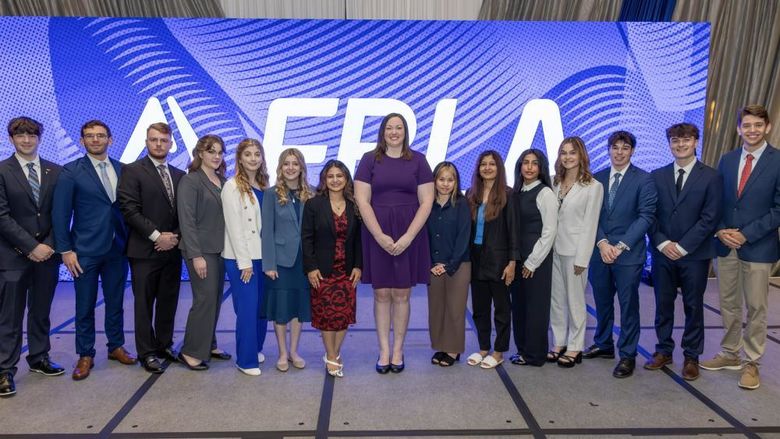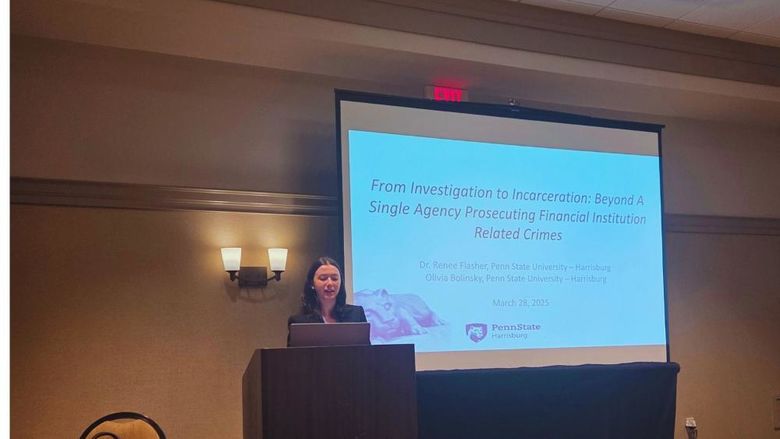UNIVERSITY PARK, Pa. — With students learning in a variety of ways over the past year in response to the coronavirus pandemic, Commonwealth Campus Faculty Development recently held a series of webinars where a diverse panel of students from across Commonwealth Campuses discussed their educational experiences during the pandemic.
“Instructors are curious about which pedagogical strategies are helping their students to succeed and which are causing them to struggle,” said Jennifer Keagy, senior director for Statewide Instructional Design for the Commonwealth Campuses. “Through the Students Speak Series they could learn more from students about which course experiences from the last year they hope will remain beyond teaching and learning during the pandemic.”
The webinars, which are a collaboration between Commonwealth Campus instructional designers, faculty and the Council of Commonwealth Student Governments, covered topics such as effective technology practices, strategies for communication and academic support, and strategies for student engagement. Students shared what has helped them succeed and what has caused them to struggle, as well as what learning experiences adopted over the past year, they hope will remain part of the curriculum.
Megan Close, a senior at Penn State Abington who helped organize the series, said, “This series was important for a few reasons, the first being the space that was created for students to speak on issues that are important to us. As both a panelist and someone who worked behind the scenes, I can confidently say that this panel was so successful due to the collaboration between faculty, staff and students from a variety of Commonwealth Campuses.”
In the student engagement session, students spoke about how to “build a community” despite remote learning. Some ideas they mentioned were conducting ice breakers at the beginning of class, using the same breakout groupings to promote community building, and creating a rapport with students by asking them how they are doing.
Students added that things such as Zoom polls and chat questions, having guest speakers, using innovative technologies to engage students in a different way, and small group activities can help promote engagement during in-class learning. Allowing students to share their personal opinions in reaction papers, assigning a video to watch prior to class for a class discussion, and conducting low-stakes quizzes were some of the ideas that students had for outside-of-class learning activities that promote engagement.
Some of the activities that students suggested keeping when in-person learning resumes include small-group activities to allow students to discuss lecture material, providing lecture recordings for students to revisit for clarification, and considering sharing pre-recorded lectures in Canvas prior to class.
The communications and support session focused on how students preferred to communicate with their instructors — Canvas for course communication, email for advising and other communications. They also wanted communication to be consistent and asked that instructors consider asking students their preferred method of communication.
Students provided several ways instructors could assist students who are struggling, including reaching out with a friendly word; reminding students of resources available; and building a relationship with students. They reported that having an instructor with whom they have a relationship reach out to them is impactful.
Students added that Zoom office hours have been easier to attend and that office hours provide a great opportunity to build relationships.
Students also requested that clear, consistent communication, a virtual option for office hours and encouraging students to attend office hours should continue when in-person learning resumes.
Students have had to rely heavily on technology during the pandemic and remote learning. In the session on technology, students spoke about the different platforms they have used, including Canvas and Zoom.
Regarding Canvas, some student requests included content be organized into modules, assignments appear in the To Do list and that all content for the semester be released at once rather than weekly. They suggested that instructors give students a walkthrough of course set-up and provide students with technical "how-to" instructions for assignments/quizzes/etc. They added that short Canvas announcements are more effective than e-mails.
Regarding Zoom, students asked that instructors encourage participation during breakout group activities, encourage students to turn on cameras, consider repeating breakout room groupings to help build a sense of community, and share class recordings – students appreciate being able to revisit for clarification and homework help.
Students requested that technology support in the form of opportunities to practice new technology, advertising campus IT support resources, and offering office hours dedicated to going over more complicated technology be available.
Keagy discussed the importance of sessions such as these, stating, “Instructors have put a lot of work into adapting their courses to meet teaching and learning needs and going back to in-person instruction in the fall doesn’t mean that the faculty have to abandon the good practices that they’ve put into place. There are a lot of adaptations that students hope instructors will continue to use, no matter the mode of instruction. Hearing from the students about what worked can help faculty plan future courses which continue to meet student needs.”




